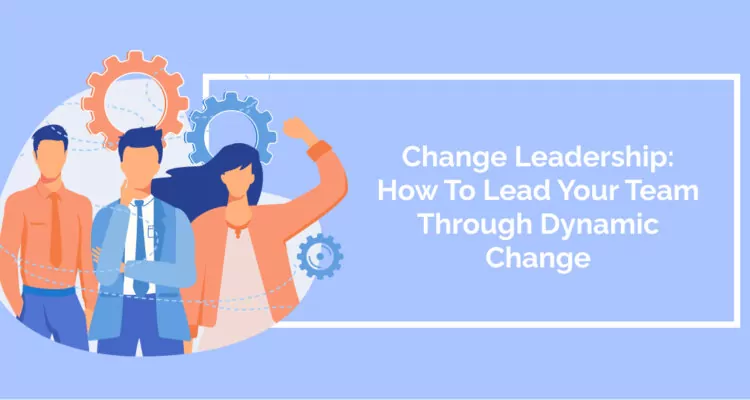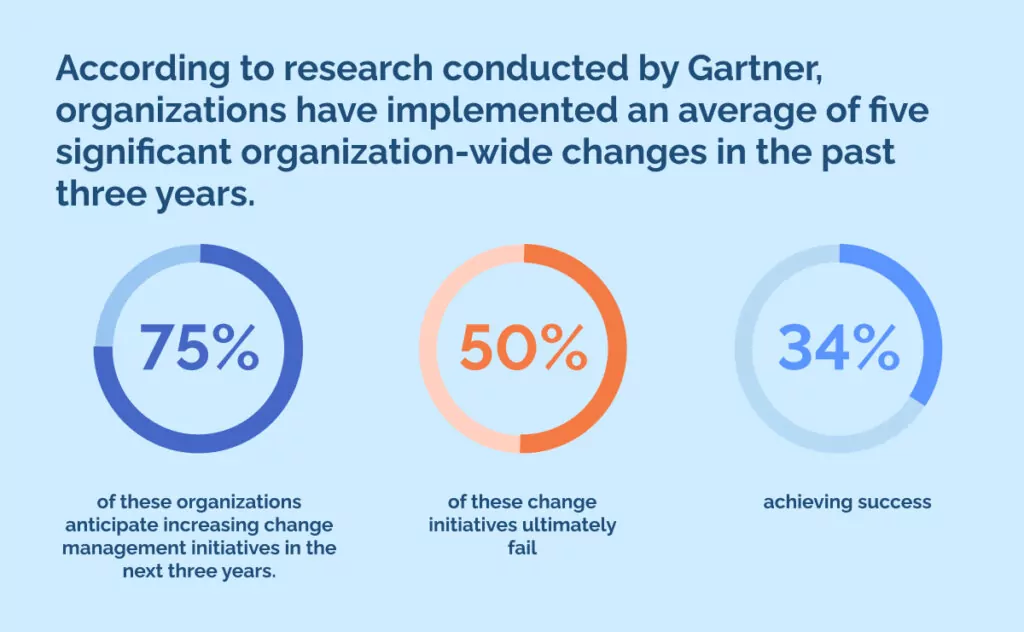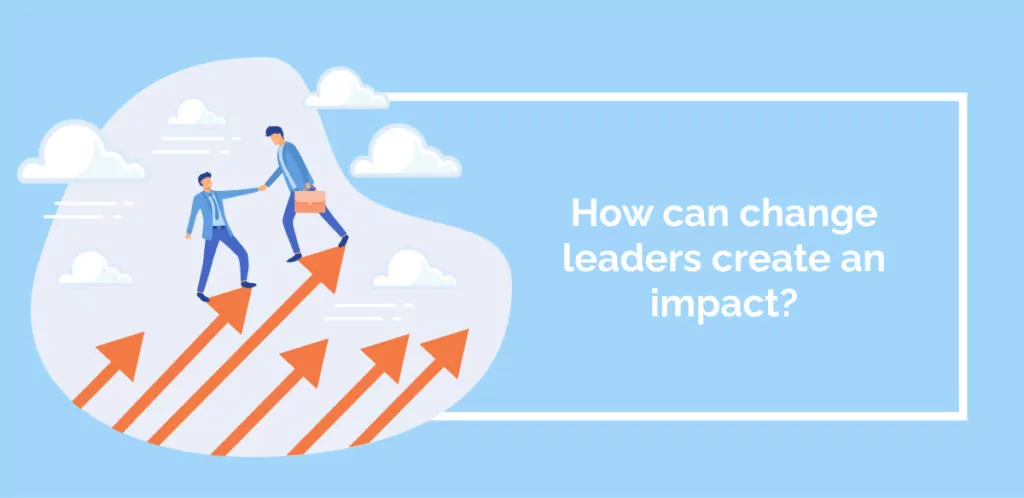
In an era of relentless evolution and digital innovation, the capacity to guide and implement change is not merely advantageous—it’s a fundamental requirement.
Change often brings with it an aura of trepidation and resistance due to its inherent unpredictability. However, equipped with strategic foresight, empathetic understanding, and effective guidance, leaders can transform these apparent obstacles into launchpads for innovation and development. This article arms you with the necessary theoretical knowledge and practical tools to not just manage change but to truly direct it.
According to research conducted by Gartner, organizations have implemented an average of five significant organization-wide changes in the past three years. Nearly 75% of these organizations anticipate increasing change management initiatives in the next three years. However, it is disheartening to note that half of these change initiatives ultimately fail, with only a mere 34% achieving success.

Prepare to delve into techniques that inspire your team, cultivate resilience, and stimulate positive changes even amidst tumultuous transformations. Regardless of whether you’re an experienced leader or a novice stepping into a leadership role, this guide will empower you to traverse the dynamic business environment with assurance and agility.
Let’s embark on this journey of change leadership together, turning disruptions into triumphs and uncertainties into catalysts for success.
What is change leadership?
Change Leadership is a specialized subset of leadership that focuses on driving, managing, and sustaining significant organizational transformations. It is a proactive, forward-thinking approach that actively embraces change to achieve desired outcomes.
The concept of Change Leadership goes beyond the traditional management of change by instilling a culture of adaptability, encouraging innovation, and fostering a sense of ownership among all organization members. It combines strategic planning, project management, and human resource management with leadership principles to guide the transformation process.
What are the responsibilities of a change leader?
Change leaders are responsible for setting the vision for change, communicating it effectively, and ensuring the team is motivated and equipped to implement it. They must also manage reactions and resistance to change, which requires a deep understanding of human behavior, organizational dynamics, and the change process itself.
Why is dynamic change leadership important?
Effective Change Leadership is an absolute must in today’s fast-paced business world. Organizations that fail to constantly adapt and innovate are doomed to fall behind their competitors. It’s not just about implementing new strategies, systems, or structures but also about fostering a culture of continuous improvement and adaptability throughout the entire organization.
Change management vs. change leadership
Change Management and Change Leadership, though often used interchangeably, are distinct concepts that offer unique perspectives and strategies for dealing with organizational change.
Change Management
Change management is a structured approach to transitioning individuals, teams, and organizations from a current state to a desired future state. It emphasizes change’s “management” aspect, focusing on control and predictability.
Start with:
- Structured Approach: Change management utilizes a systematic process that includes steps that can be sequenced and adapted to suit an organization’s specific needs and characteristics.
- Control: The emphasis is on minimizing disruption and maintaining stability during the transition. This involves careful planning, clear communication, and close monitoring of the change process.
- Predictability: Change management aims for predictability. It seeks to understand the potential impacts of change and develop strategies to manage these effectively.
Change Leadership
On the other hand, Change leadership, while it encompasses many of the same elements as change management, emphasizes the larger transformational picture more. It’s about driving change, not just managing it.
Start with:
- Vision: Change leadership starts with a compelling vision for the future. Leaders inspire and motivate their teams to embrace new ways of doing things, often leading by example.
- Innovation: Change leadership encourages innovation and is more willing to take risks. It sees change as an opportunity for improvement and growth rather than a threat to stability.
- People-centered: Change leadership is all about people. It acknowledges the human element of change, recognizing the emotions, fears, and hopes that come with it.
Change leadership models

Change is inevitable in the business world. Organizations must adapt to stay competitive with the ever-evolving landscape of technologies, consumer preferences, and market dynamics.
However, managing change effectively can be a daunting task. It requires strategic planning, clear communication, and strong leadership. That’s where change leadership models come into play. These models provide a structured approach to navigating organizational change.
In this section, we’ll explore four different change leadership models, including Kotter’s 8-Step Change Model, Lewin’s Change Management Model, ADKAR Model, and McKinsey’s 7S Model.
Each model offers unique strategies and tactics to help leaders facilitate change more efficiently and effectively:
Kotter’s 8-Step Change Model
This model, developed by Harvard Business School professor, John Kotter, is a comprehensive approach to organizational change. It outlines a clear process, consisting of eight stages, that guides the transformation process.
Each step focuses on a key principle associated with people’s response to change and serves as a roadmap for leading successful change initiatives.
- Establish a Sense of Urgency: This first step involves identifying potential threats and developing scenarios that show what could happen in the future.
- Create a Guiding Coalition: You need a strong leadership team to lead change.
- Develop a Vision and Strategy: For change to be successful, it’s crucial to have a clear vision and a strategy to achieve it.
- Communicate the Change Vision: The vision must be communicated effectively to gain buy-in from all stakeholders.
- Empower Employees for Broad-Based Action: Remove obstacles, change systems, or structures undermining the change vision.
- Generate Short-Term Wins: Plan for visible improvements in performance or “wins.”
- Consolidate Gains and Produce More Change: Use increased credibility from early wins to change all systems, structures, and policies that don’t fit the vision.
- Anchor New Approaches in the Culture: Make the new ways of operating part of the culture.
Lewin’s Change Management Model
Kurt Lewin, a social psychologist and change management expert, developed this model. It suggests that change involves a move from one static state via a progressional shift to another dormant state.
The model is based on three primary stages: Unfreeze (preparing the organization to accept change), Change (the transition period), and Refreeze (solidifying the new status quo).
- Unfreeze: This phase involves preparing the organization to accept that change is necessary.
- Change: During this phase, the organization implements the planned changes.
- Refreeze: The final stage is about establishing stability once the changes have been made.
ADKAR Model
ADKAR, an acronym for Awareness, Desire, Knowledge, Ability, and Reinforcement, is a results-oriented change management model. Developed by Prosci, it emphasizes human elements in managing the transition phase of a change process.
The model is particularly useful for identifying gaps in the change process and providing specific actions to address them.
- Awareness: Understanding why change is necessary.
- Desire: The motivation to support and participate in the change.
- Knowledge: Knowing how to change.
- Ability: The capability to implement the change at the required level.
- Reinforcement: Sustaining the change and not reverting to old ways.
McKinsey 7S Model
This model, developed by consulting firm McKinsey & Company, considers seven critical aspects of organizational change: strategy, structure, systems, shared values, style, staff, and skills.
It emphasizes the interconnectedness of these elements and asserts that an effective change strategy must consider all of them. Planning and implementing change help leaders take a holistic view of their organization.
- Strategy: The plan for achieving organizational goals.
- Structure: The way the organization is structured.
- Systems: Daily activities and procedures.
- Shared Values: The core values of the company.
- Style: The style of leadership in the organization.
- Staff: The employees and their general capabilities.
- Skills: The actual skills and competencies of the employees.
Each model offers a unique perspective on change management, but they all emphasize the importance of clear communication, employee engagement, and a well-defined vision for change.
Leaders who grasp and apply these models can skillfully navigate their organizations through times of change, ensuring effective guidance and smooth transitions.
How can change leaders create an impact?

According to McKinsey, despite the presence of dedicated change management teams in most organizations to address employee resistance, the failure rate of change projects still surpasses 70%.
It’s not hard to see why most change initiatives fail. The key to successful change is creating an emotional connection between the organization and its people. This involves inspiring employees, setting realistic expectations, and maintaining accountability at all levels of the organization.
Change leaders play a critical role in driving transformation within organizations. They can inspire others, create a vision for the future, and develop strategies for achieving it. Here’s how change leaders can make a difference:
Visionary Leadership
- Setting Clear Goals: Change leaders articulate a clear and compelling vision for the future. They define what success looks like and set measurable goals to track progress.
- Inspiring Others: Change leaders inspire team members by communicating the vision effectively. They create a sense of urgency, fostering motivation and enthusiasm among employees to participate in the change process.
Strategic Planning
- Developing Strategies: Change leaders formulate strategies to achieve the vision. They analyze the current situation, identify gaps, and devise plans to bridge them.
- Risk Management: Change leaders anticipate potential obstacles and risks associated with the change. They develop contingency plans and ensure the organization is prepared to handle setbacks.
Implementing Change
- Driving Initiatives: Change leaders drive the implementation of change initiatives. They allocate resources, delegate responsibilities, and monitor progress to implement the change effectively.
- Managing Resistance: Change leaders manage resistance to change by acknowledging concerns, supporting, and involving employees in the change process.
Continuous Improvement
- Evaluating Progress: Change leaders regularly evaluate the progress of the change initiatives. They use metrics to assess whether the change leads to the desired outcomes and make adjustments as necessary.
- Promoting Learning: Change leaders foster a culture of continuous learning. They encourage feedback, learn from failures, and continually refine strategies based on new insights.
10 Change leadership tips for 2023

Navigating the complex landscape of change requires more than traditional management skills. It demands a blend of strategic thinking, technological savvy, emotional intelligence, and a deep understanding of people and processes.
Here, we delve into ten key strategies to help you become a successful change leader in this ever-evolving business environment. These tips encompass various aspects of change leadership:
- Foster a Progressive Mindset: As a change leader in 2023, it’s essential to cultivate a mindset that’s geared toward the future. Understanding and anticipating upcoming trends, technological advances, and societal shifts will help you steer your team toward novel solutions and strategies, ensuring your organization remains competitive.
- Encourage Adaptability: With the pace of change accelerating, adaptability is becoming more crucial. As a change leader, you should encourage a culture that is receptive to change, open to experimentation, and capable of learning from setbacks. Implementing agile methodologies can also enhance productivity and streamline processes.
- Rely on Data-Informed Decisions: The rise of AI and machine learning has underscored the importance of data-informed decision-making. Leverage these technologies to gain insights, forecast trends, and make strategic decisions. This approach reduces uncertainty and aligns your change initiatives with the organization’s objectives.
- Focus on Employee Involvement: Change can be unsettling for employees. To ensure successful implementation, focus on keeping employees engaged and well-informed. Communicate openly about upcoming changes, provide training where necessary, and encourage feedback. After all, change isn’t just about systems or processes – it’s about people.
- Commit to Ongoing Learning: The rapid evolution of technology necessitates continuous learning and skill development. Invest in training programs and learning platforms to equip your team with the skills to navigate new changes.
- Develop Emotional Intelligence: Successful change leadership requires more than technical expertise. Emotional intelligence – the ability to comprehend and manage your and others’ emotions – is vital for managing change. It helps build resilience, foster collaboration, and deal with resistance to change.
- Champion Sustainable Practices: As environmental sustainability takes center stage, consider how your change initiatives align with sustainable practices. This could involve implementing energy-saving technology or encouraging remote work to minimize carbon emissions.
- Adopt a Customer-Focused Approach: Successful change initiatives should prioritize enhancing customer experiences in an era of increased customer expectations. Utilize customer feedback and data to inform your change strategies.
- Uphold Ethical Leadership: Ethical leadership sets the tone for organizational behavior. Ensure transparency, promote diversity and inclusion, and make decisions that consider the welfare of all stakeholders.
- Continually Evaluate and Adjust: Change management is an ongoing process. Regularly assess the effectiveness of your change initiatives using key performance indicators (KPIs), and adapt as required. This iterative approach ensures your strategies remain relevant and effective amidst evolving challenges.
What’s next for change leadership?
The realm of leadership is on the cusp of a momentous evolution as we navigate through a swiftly changing business landscape. In the future, change leadership will be driven by technological advancements, increased digitalization, and a heightened focus on sustainability and social responsibility.
Artificial Intelligence (AI) and Machine Learning (ML) will play pivotal roles in shaping change leadership. Predictive analytics, enabled by AI, will provide leaders with insights into potential future scenarios, thereby allowing for proactive decision-making. This will facilitate forecasting changes, enabling leaders to strategically prepare their organizations for impending shifts.
The digitization of operations will necessitate a shift in leadership style. With remote work becoming increasingly common, leaders must master virtual leadership, ensuring effective communication, collaboration, and engagement in a digital environment.
The future of change leadership will require a greater emphasis on sustainability and social responsibility. Leaders will need to drive changes that benefit their organizations and contribute positively to society and the environment. This will involve adopting sustainable practices, fostering a culture of inclusivity, and promoting ethical conduct.
To sum up, the future of change leadership will be characterized by technological integration, sustainability, a data-driven culture, and resilience. These transformations will redefine how leaders drive change, ultimately leading to more effective and impactful leadership.
WalkMe Team
WalkMe spearheaded the Digital Adoption Platform (DAP) for associations to use the maximum capacity of their advanced resources. Utilizing man-made consciousness, AI, and context-oriented direction, WalkMe adds a powerful UI layer to raise the computerized proficiency, everything being equal.



